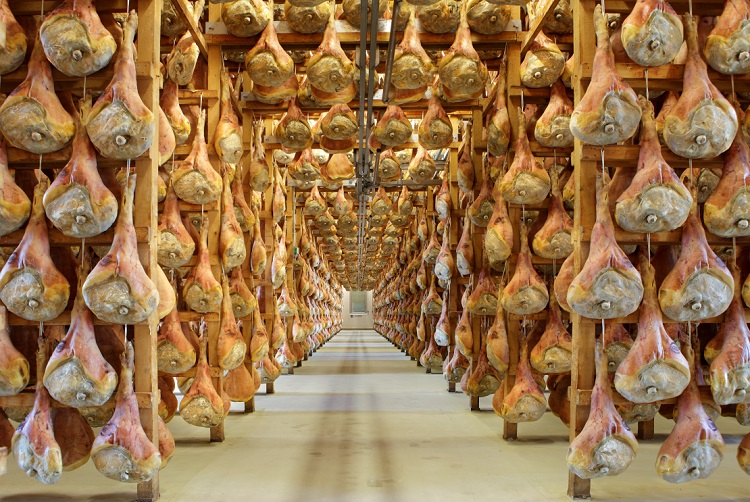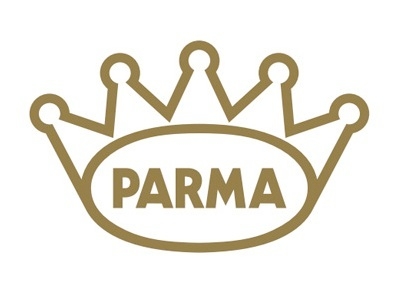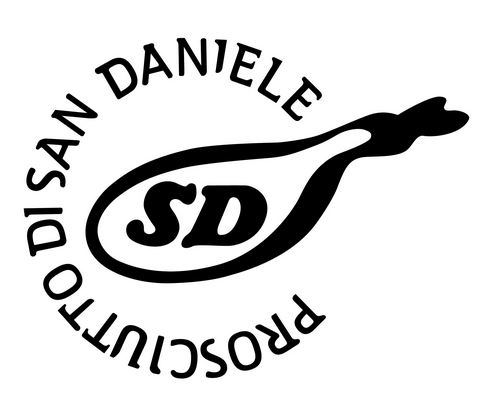Whether it’s wrapped around a minted fig or wedged among mozzarella and tomatoes between crusty bread, prosciutto has a privileged place in Italian gastronomic culture. Reflecting the diversity of the country, there are many different types of prosciutto, all with their own particular characteristics. With such an array of prosciuttos, how do you choose the one that is right for you? In this article, we tell you how to distinguish between Italy’s two most prolific prosciuttos: prosciutto di Parma and prosciutto di San Daniele.
Labeling
The first and most obvious point is that the two prosciuttos have different seals on their labels. Prosciutto di Parma has a five-pointed gold crown stamped on its packaging, whilst prosciutto di San Daniele has a black trotter. These seals are found on each packet of their respective prosciuttos regardless of the specific producer, as they stand as official markers of the products’ protected designation of origin and processing techniques. In other words, a prosciutto cannot be a ‘prosciutto di Parma’ or ‘prosciutto di San Daniele’ without one of these prized stamps of approval.
Processing and Curing
Aside from the obvious labelling, the two prosciuttos also differ in the way they are processed and cured, impacting on their taste. Perhaps the most significant difference is that Prosciutto di Parma relies on a greater quantity of salt during its curing process. Being salted twice during the curing, prosciutto di Parma definitely has a saltier taste when compared to the ‘sweeter’ prosciutto di San Daniele. This makes the former an ideal partner for fresh cheeses such as mozzarella and burrata, whilst the latter is more suitable as an accompaniment to fruits such as melon and figs.
Alongside the different reliance on salt, the prosciuttos are also distinguished by the less-quantifiable though equally-important factor of ‘air quality’. Hanging for months in meticulously controlled storerooms, the flavor of the prosciuttos is altered by the notes carried on the air of their respective (and tightly defined) areas. It’s often said that prosciutto di Parma takes on qualities of the sea air blowing down the Apennine valleys, whilst prosciutto di San Daniele is influenced by the mingled breezes of the Carnic Alps and Adriatic Sea.
The Pigs
Going right back to the source, the flavors of the two prosciuttos are also influenced by the protagonists of the show, the pigs themselves. The first point to mention is that the pigs have different diets – those from Parma are fed a carefully measured mix of cereals, grains and most importantly whey produced during the production of parmigiano reggiano, whilst those of San Daniele are given a diet rich in acorns. Secondly, it’s worth mentioning that the two prosciuttos use different parts of the pig: Prosciutto di Parma exclusively uses the thigh of the animal, whilst prosciutto di San Daniele uses the entire leg, including trotter (hence its official stamp). These two factors, when taken with the processing and curing, contribute to giving the two prosciuttos their distinct tastes.
When confronted with the expansive selection of prosciuttos available worldwide these days, it can often be difficult to choose the one that is right for you. With a few tips on Italy’s two most famous prosciuttos, however, you should now have a clearer idea of what to look for and what to expect. For any further information on prosciutto, or any other Italian Food Products, please don’t hesitate to contact us.



